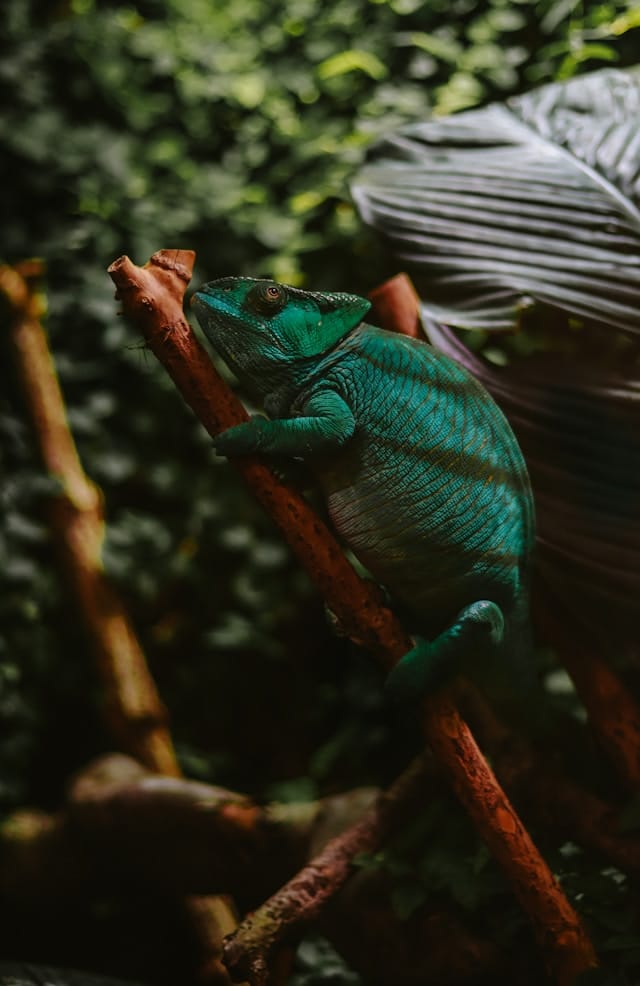What Are the Safe Heating Solutions for a Reptile’s Winter Habitat?

As the winter season approaches, maintaining the right temperature inside your reptile’s enclosure becomes a priority. Reptiles are ectothermic creatures, which means they depend on external sources for heat. The absence of adequate warmth can lead to health issues and, in extreme cases, can prove fatal. In this article, we will explore safe heating solutions for your pet reptile’s winter habitat, focusing on various heating and lighting techniques, the best kind of bulbs to use, the importance of temperature regulation and the influence of different species on these factors.
1. Understanding the Basics: Reptiles and Heat
Reptiles are a diverse group of creatures, each with its unique heating requirements. As a responsible pet owner, it’s crucial to understand your reptile’s specific heat and light needs to provide the best care for them.
Lire également : What’s the Best Approach to Socialize a Rabbit with Other Household Pets?
Different species prefer different ranges of temperatures. For example, tropical reptiles like the Bearded Dragon or the Veiled Chameleon thrive in basking temperatures of around 95-100°F, while temperate species like the Corn Snake or the Russian Tortoise are comfortable in the 70-85°F range.
Furthermore, reptiles need a temperature gradient in their enclosure. This means providing a warmer ‘basking’ area where they can absorb heat and a cooler region where they can retreat if they get too warm. This allows your pet to self-regulate its body temperature.
Sujet a lire : How to Create a Nutrient-Rich Diet Plan for a Parakeet?
2. Heating Equipment: Bulbs, Mats, and More
The market is blooming with a variety of heating solutions for reptile enclosures, making choosing the appropriate product a bit of a challenge. The most popular options include heat lamps, bulbs, ceramic heaters and heat mats.
Heat lamps and bulbs are great for creating a focused basking spot. They emit light and heat, mimicking the natural sunlight your reptile would experience in the wild. To make the best choice, look for bulbs specifically designed for reptile enclosures, such as halogen or mercury vapor bulbs.
Ceramic heaters, on the other hand, are a fantastic choice for providing consistent ambient heat without emitting any light, making them perfect for nocturnal species or for heating the enclosure at night.
Lastly, heat mats can be placed under the terrarium or on one of the walls to provide a gentle source of heat. However, they should not be the sole source of heat in the enclosure as they do not adequately heat the air.
3. Importance of Lighting
While heat is a necessity for your reptile, proper lighting is equally crucial. In addition to providing warmth, light plays a critical role in your pet’s overall well-being.
Natural sunlight offers the best lighting, but it’s not always possible to provide that, especially during the colder months. Therefore, it is essential to use special UVB bulbs in the enclosure. These bulbs mimic natural sunlight and help your pet synthesize vitamin D3, aiding in calcium absorption and promoting overall health.
Moreover, it’s crucial to replicate the natural daylight cycle for your reptile. Most reptile species need about 12 hours of light and 12 hours of darkness each day. Therefore, all lights in the enclosure should be turned off at night, including heating bulbs.
4. Water: An Often Overlooked Source of Heat
While we often focus on heating the air in a reptile enclosure, it’s equally important to consider the temperature of the water. Many reptiles, especially aquatic species, rely on warm water for heating.
The best way to heat water in your reptile’s enclosure is with a submersible heater. These heaters are safe, reliable, and easy to use. They’re also completely submersible, so they won’t take up valuable space inside the enclosure.
It’s important to monitor the water temperature regularly to ensure it’s within the suitable range for your reptile. Most species prefer water temperatures between 70 and 80 degrees Fahrenheit, but check the specific requirements for your species.
5. Monitoring and Regulation of Temperature
No matter how well you’ve set up your heating and lighting system, regular monitoring is crucial. Fluctuations in room temperature, drafts, or malfunctioning equipment can all affect the temperature inside your reptile’s enclosure.
The use of reliable digital thermometers and hygrometers is vital in keeping track of these parameters. It’s also good practice to have multiple thermometers placed in different locations in the enclosure to ensure the temperature gradient is maintained.
Additionally, you can use a thermostat to regulate the heat output of your heating equipment. This device will automatically turn off the heat source if the temperature reaches a preset maximum, preventing overheating.
Remember, proper heating and lighting in your reptile’s enclosure are keys to maintaining their health and happiness, especially during the colder months. Take the time to research and understand your species’ specific needs, invest in quality heating and lighting equipment, and monitor conditions regularly.
6. Popular Heating Solutions: Best Sellers and Restock Best Items
Dedicated pet owners are often looking for the best options to keep their reptiles comfortable and healthy. This naturally leads them to hunt for top-rated heating solutions. Among the best sellers on the market are heat lamps, heat mats, and ceramic heaters, all of which have been discussed previously in this article.
Firstly, the heat lamp continues to be a crowd favorite. Heat lamps, especially those designed for enclosures, can provide a focused heat source, which is beneficial for reptiles like bearded dragons. These creatures are known to enjoy basking in warm spots, making a heat lamp an excellent choice for their comfort.
Heat mats, on the other hand, are a favorite for reptiles such as leopard geckos. These mats can be placed under the enclosure or on one side, providing a gentle, steady heat source. However, as noted earlier, they should not be the sole heat source in the enclosure.
Ceramic heaters are another popular choice, especially for nocturnal species. They provide consistent ambient heat without emitting any light, making them perfect for nighttime heating.
Remember the importance of extension kits when purchasing these heating solutions. These kits often include a heat mat, a heat lamp, and other essential items for your reptile’s comfort. However, due to high demand, they often require a huge restock, so make sure to grab one when they’re available. No code required!
7. Tailoring the Habitat: Bamboo and Black Colors for Warm Hides
A reptile’s habitat should be a safe and comfortable space where it can thrive, and tailoring this environment plays a crucial role. Different species have different preferences when it comes to their enclosure. For example, some reptiles prefer warm hides made of certain materials or in specific colors.
Bamboo and black colors are often used in creating warm hides. Bamboo is a great material because it is durable, breathable, and provides a natural-looking environment. On the other hand, black colors are known to absorb heat more efficiently, making them an excellent choice for a warm hide.
Conclusion: Craft a Perfect Winter Habitat
In conclusion, providing a warm and cozy winter habitat for your reptile involves many factors. Understanding your reptile’s unique needs is paramount. This includes knowing their preferred body temperature, the heat source they are most comfortable with, and even their preference for enclosure materials and colors. Be it heat lamps for bearded dragons or heat mats for leopard geckos, the market offers a wide array of heating solutions tailored to their needs.
As a responsible pet owner, it’s essential to invest time and resources in quality heating and lighting equipment, and to ensure the regular monitoring and regulation of temperature within the enclosure. Also, don’t forget the importance of proper lighting, heating, and water temperature to your pet’s overall health. While these tasks may seem daunting, remember that your efforts contribute greatly to your pet’s well-being, making them worthwhile.
Prepare for the colder months by ensuring your pet’s comfort. With the right knowledge and consistent care, you can make your reptile’s winter habitat a warm, safe, and comfortable place for them to thrive. Happy heating!
